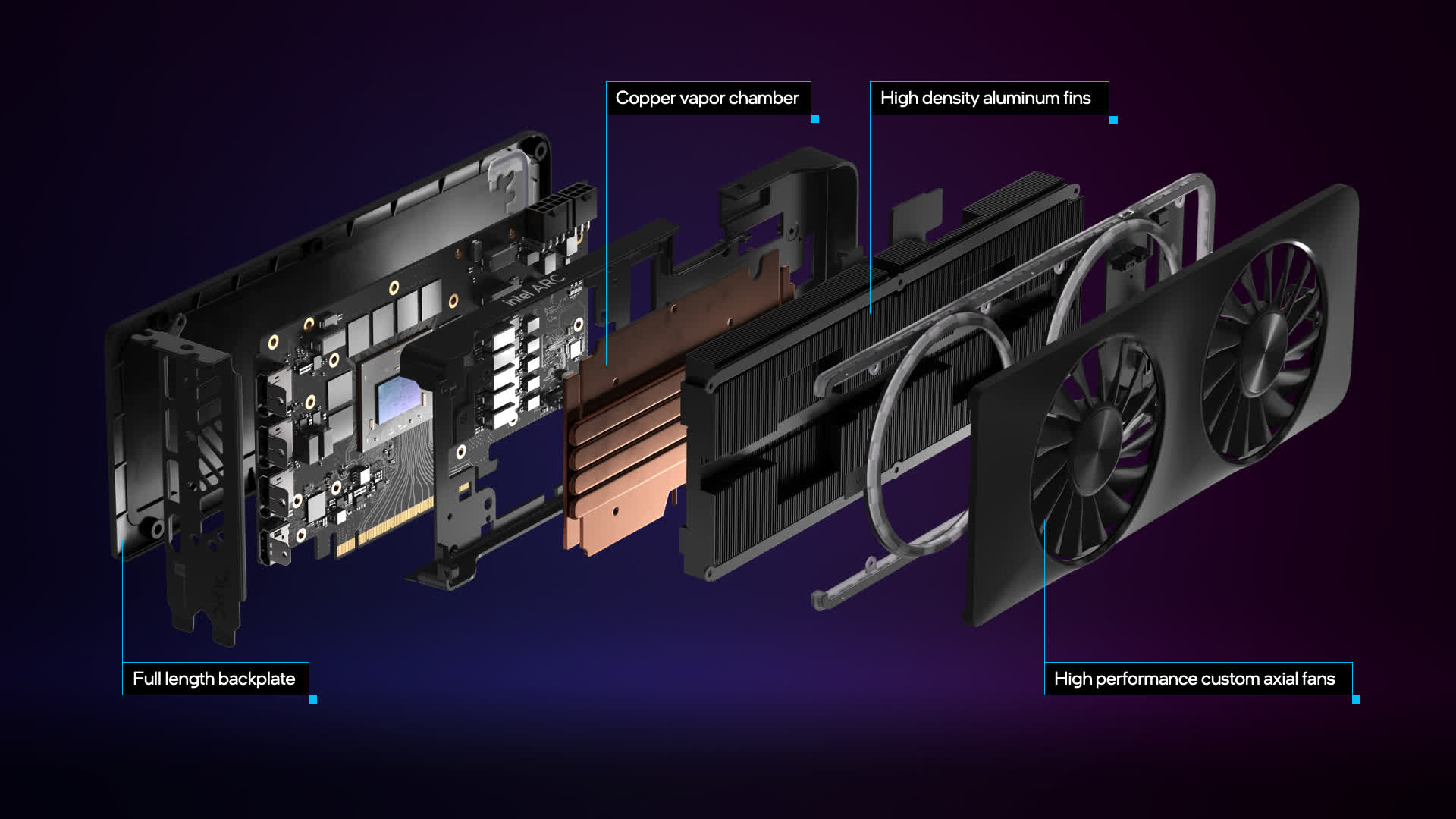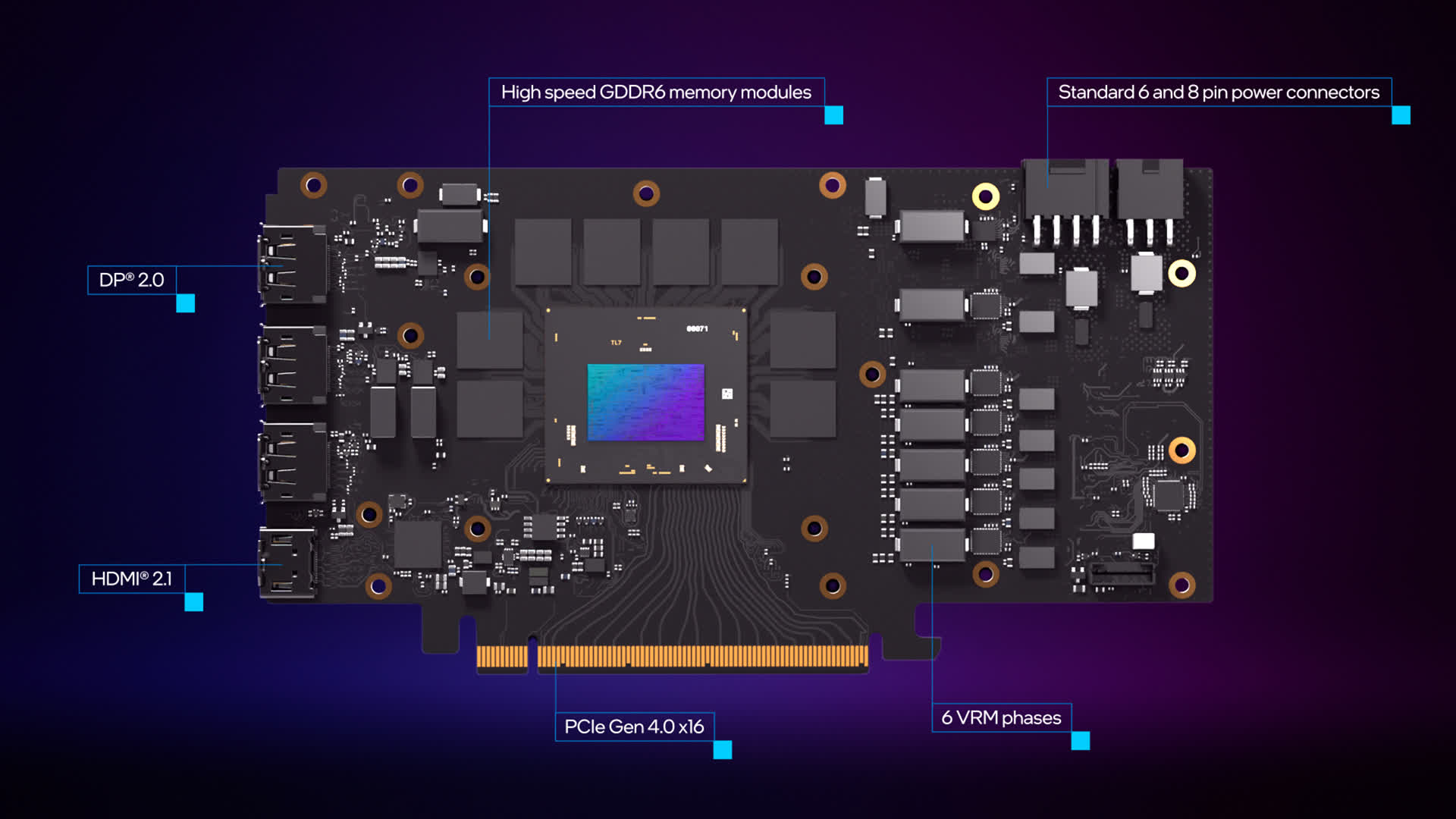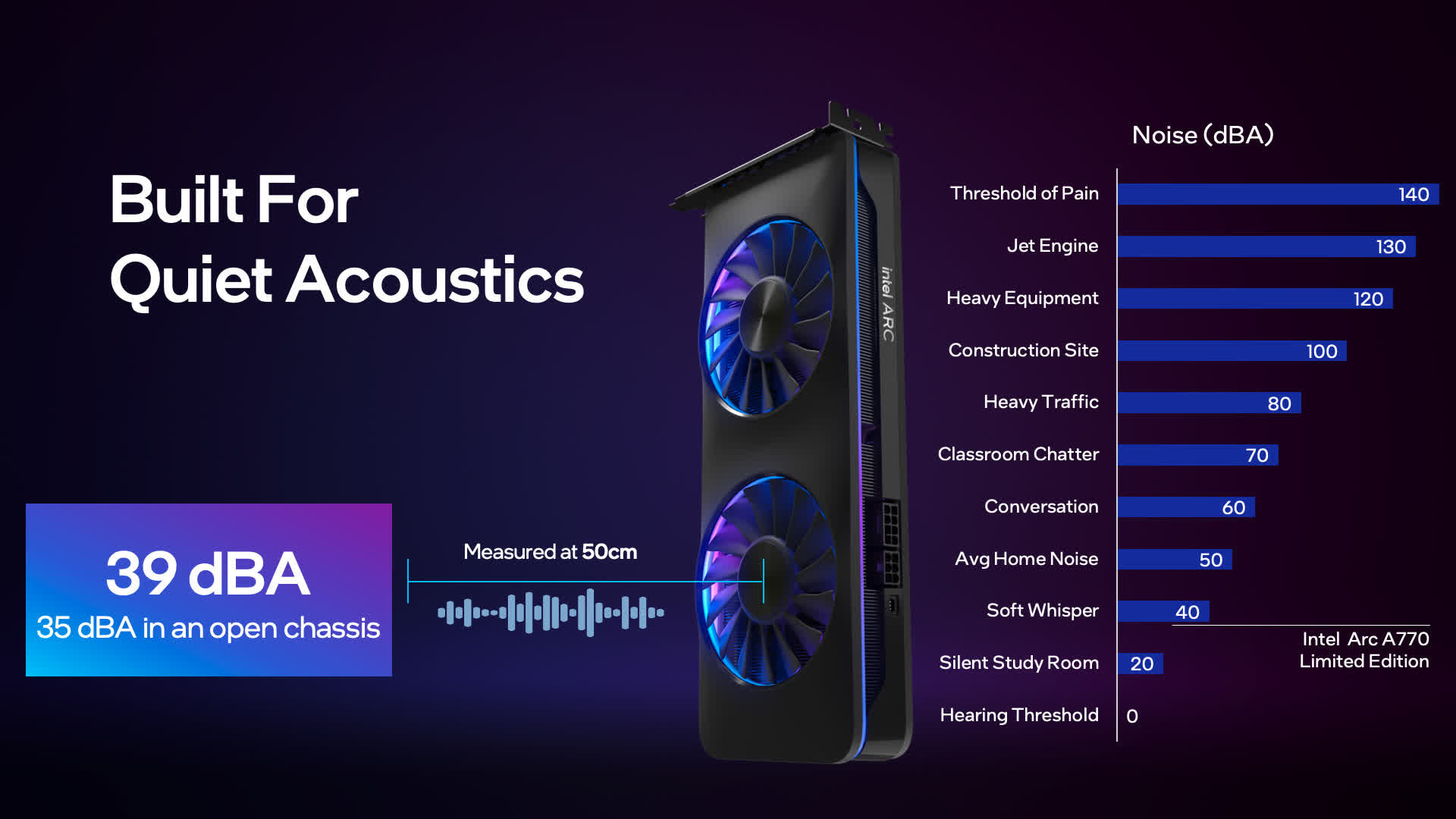In context: Intel marketer Ryan Shrout joined veteran engineer Tom Petersen in the lab for another debrief about the upcoming Arc Alchemist GPUs. This time they delved into the cooling capacity and overclocking potential of the Arc A750 and Arc A770 Limited Edition cards.
For some context, the Limited Edition cards are just Intel's version of Nvidia's Founder's Edition cards -- they're neither special nor limited. Shrout emphasized that they'd be available from day one and in large quantities.
So the question is: will you want one? For Intel's first foray into making a graphics card, it sounds like they've done a decent job. Shrout and Petersen focus mainly on the A750 Limited Edition in this video, but from the looks of it, the A770 Limited Edition uses a similar PCB and cooler.
The cooler itself is a dense array of aluminum fins sandwiched between two fans and a large copper vapor chamber. The vapor chamber makes contact with the GPU itself as well as the GDDR6 and VRMs, and feeds into four flat 10 x 3 mm heat pipes that travel laterally across the card.

Under the cooler, the PCB has 8-pin and 6-pin connectors that feed into six VRMs that sit to the right of the eight GDDR6 modules that surround the GPU. One HDMI 2.1 and three DisplayPort 2.0 ports provide the output.
Petersen says that the board was designed with excessive cooling that makes overclocking possible. To prove his point, he fires up an A750-equipped machine and takes a shot at overclocking it using the Arc Control software.

As far as overclocking methodology goes, Petersen's isn't the best. He starts with the unexplained and nonsensically named "performance boost" slider, and when pushing that higher stopped affecting the clock speed, he hiked the power limit up to the max, 228 W. Then he started incrementally lifting the voltage offset, eventually declaring himself finished when the GPU made it past 2700 MHz at an offset of 50 mV.
No stress tests and no temperature tests. No explanation of how to roll the settings back after pushing too far and causing the system to crash, either.
Petersen actually did the overclocking while running Hitman 3 in the background -- so that's sort of a yardstick for stability. He used the game to measure the performance increase from the overclocking. At default settings, the GPU clocked itself at 2400 MHz and reached ~90 fps. At 2719 MHz it made it to ~96 fps, an almost 7% performance increase yielded by a 13% overclock, which isn't too bad.

It's a bit strange that the A750 was running at 2400 MHz to begin with, actually. Its game clock -- the only clock speed that Intel provides on the spec sheet -- is 2050 MHz. Compared to that, 2400 MHz is a 17% overclock and 2719 MHz is a 33% overclock.
At the end of the video, Shrout and Petersen finally address the elephant in the room: price and availability. All they say is this: "We know you're eager to get to that. We're eager to share it as well -- it'll be very soon."
https://www.techspot.com/news/96007-intel-overclocks-arc-a750-27-ghz-using-factory.html